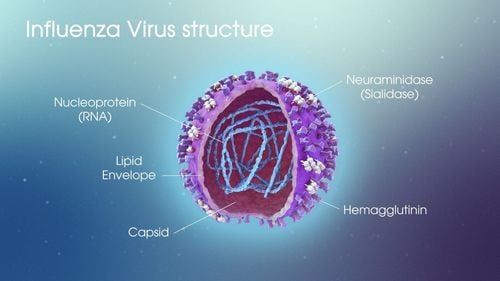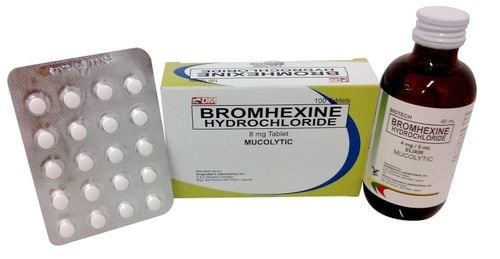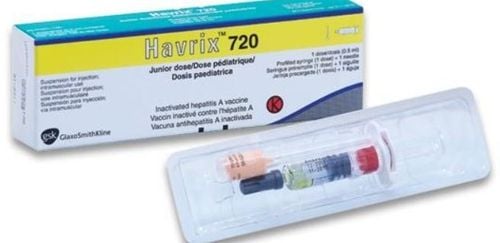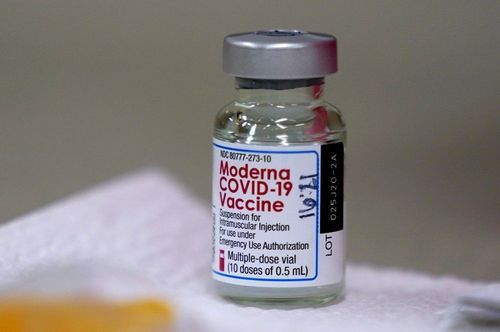This is an automatically translated article.
There are four types of influenza viruses: A, B, C, and D. Wild birds - especially wild ducks, geese, swans, gulls, shorebirds, and terns - are natural hosts for most viruses. influenza A.1. Influenza A viruses
Influenza A viruses are divided into other viruses on the basis of two proteins on the surface of the virus. There are 18 known HA subtypes and 11 known NA subtypes. There are different combinations of HA and NA proteins.
For example, an H7N2 virus, designated an influenza A virus has 7 HA proteins and 2 NA proteins. Similarly, an H5 virus, an H5N1 virus, has 5 HA proteins and 1 NA protein.
All known influenza A viruses can infect birds, with the exception of others such as the H17N10 and H18N11 viruses, which are found only in bats. Only two influenza A viruses, including the H1N1 and H3N2 viruses, are currently circulating in humans. Several other subtypes have been found in infected animals, such as infection with the H7N7 and H3N8 viruses that can cause disease in horses, and infection with the H3N8 virus that causes disease in horses and dogs.
Avian Influenza (AI) Viruses - Influenza viruses that infect birds, can evolve into distinct genetic lines in different geographical locations. Different genetic lines can be distinguished by studying the genetic makeup of these viruses. For example, an AI virus circulating in birds in Asia, known as the Asian lineage AI virus, can be recognized as genetically distinct from the AI virus circulating in birds. in the North American region (known as the North American lineage AI virus). These broad lineage classifications can be further narrowed by comparisons of genetic makeup, which allows researchers to group the most closely related viruses together.
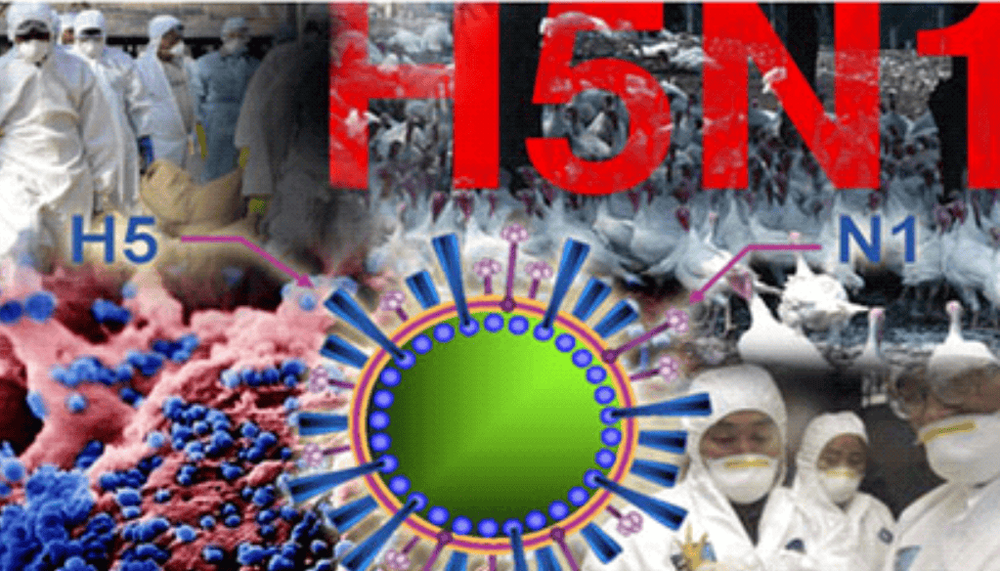
Virus cúm gia cầm có thể lây nhiễm do chim
2. The pathogenicity of influenza A virus
Influenza A viruses are designated as highly pathogenic avian influenza (HPAI) or low pathogenic avian influenza (LPAI) based on the molecular characteristics of the virus and its ability to cause disease. disease and mortality in laboratory chickens. The indications HPAI and LPAI do not address disease severity in cases where human infection with these viruses occurs; Both LPAI and HPAI viruses cause severe disease in humans.
Poultry infected with LPAI virus may show no signs of disease or show only mild disease (such as ruffled feathers and reduced egg production) that may go undetected. Infection of poultry with HPAI virus can cause severe illness with high mortality. Both HPAI and LPAI viruses can spread rapidly through poultry flocks. HPAI virus infection can cause disease affecting multiple internal organs with mortality rates as high as 90% to 100% in chickens, usually within 48 hours. However, ducks can be infected without showing signs of illness. There are genetic and antigenic differences between subtypes of influenza A viruses that normally infect only birds, which can infect birds and humans.
Avian influenza viruses rarely infect humans. Other influenza A viruses identified as avian influenza viruses that have caused infections in humans are the H5, H7 and H9 viruses. Other viruses, such as H10N8, H10N7 and H6N8, have also been detected in humans, but to a lesser extent.
2.1 Influenza A H5
Influenza A H5 includes 9 viruses: H5N1, H5N2, H5N3, H5N4, H5N5, H5N6, H5N7, H5N8 and H5N9. Most of the H5 viruses identified worldwide in wild birds and poultry are LPAI, however there are a few cases where HPAI has been identified. Sporadic human infection with H5 viruses has occurred, such as the HPAI H5N1 virus of the Asian strain currently circulating in poultry in Asia and the Middle East. Human infections with the H5N1 virus have been reported in 16 countries, the virus often leading to severe pneumonia and mortality greater than 50% of cases.
2.2 Influenza A H7
Influenza A H7 includes 9 viruses: H7N1, H7N2, H7N3, H7N4, H7N5, H7N6, H7N7, H7N8 and H7N9). Most of the H7 viruses identified worldwide, occur in wild birds and poultry. These are LPAI viruses. Human H7 virus infection is not common. The H7 viruses most frequently identified in association with human infection are the Asian influenza A (H7N9) viruses, first detected in China in 2003.
Although human infections are rare. encountered, but they can cause people to develop serious and even fatal respiratory diseases.
In addition to Asian lineage H7N9 viruses, infection with H7N2, H7N3, H7N7 viruses has also been reported. These viruses primarily cause mild to moderate illness in humans, with symptoms including conjunctivitis or upper respiratory tract symptoms.
2.3 Influenza A H9
Influenza A H9 includes 9 viruses: H9N1, H9N2, H9N3, H9N4, H9N5, H9N6, H9N7, H9N8 and H9N9. All H9 viruses identified worldwide in wild birds and poultry are LPAI viruses. The H9N2 virus has been detected in bird populations in Asia, Europe, the Middle East and Africa. The H9N2 virus is rarely present in humans, with a few cases of human illness reported often causing mild upper respiratory tract illness.
Currently in Vietnam, influenza A/H5N6 is breaking out again, currently appearing in 5 provinces with thousands of poultry culled. The risk of the epidemic spreading is very high and the possibility of affecting public health is great, so we need to be vigilant and take measures to control and prevent the disease.
Currently, influenza A/H1N1 can be prevented by vaccination with influenza vaccine. At Vinmec International General Hospital's facilities across the country, flu vaccines are available for children (from 6 months of age and older) and adults. In addition to influenza A/H1N1, the vaccine can also help prevent two other influenza viruses, influenza A/H3N2 and influenza B.
After being injected for about 2-3 weeks, the vaccine will create antibodies to help prevent the symptoms of influenza A/H1N1 virus. The vaccine lasts for about 6-12 months. Therefore, it is necessary to vaccinate every year because it is possible that the virus strains will mutate and spread at a very fast rate.
In case the patient has been infected with the flu virus and received the vaccine, there is still a chance of getting flu after the injection.
To achieve the most effective prevention, both children and adults need to pay attention to the correct schedule and get enough shots, especially the booster shot.
Influenza A/H1N1 can be cured on its own if the patient has good resistance, and the disease is detected early and treated promptly.

Tiêm vắc-xin giúp cơ thể tạo kháng thể phòng ngừa virus cúm
Advantages of vaccination at Vinmec:
Children will be examined by pediatricians - vaccines, fully screened for physical and health problems, and advised on preventive vaccines. Diseases and injection regimen, how to monitor and care for children after vaccination before giving the indication for vaccination according to the latest recommendations of the Ministry of Health & World Health Organization to ensure the best effectiveness and safety. best for children. A team of experienced and professional pediatric doctors and nurses, understand children's psychology and apply effective pain relief methods for children during the vaccination process. 100% of vaccinated children were monitored for 30 minutes after vaccination and reassessed before leaving. Undertake medical supervision before, during and after vaccination at Vinmec Health System and always have an emergency team ready to coordinate with the vaccination department to handle cases of anaphylaxis, respiratory failure - circulatory arrest, ensuring Ensure timely and correct handling when incidents occur. The vaccination room is airy, with a play area, helping children feel comfortable as if they are walking and have a good mentality before and after vaccination. Vaccines are imported and stored in a modern cold storage system, with a cold chain that meets GSP standards, keeping vaccines in the best conditions to ensure quality. Parents will receive a reminder message before the vaccination date and their child's vaccination information will be synchronized with the National Immunization Information System. You can book an appointment directly at Vinmec Hospitals and Clinics nationwide according to the list HERE.
Article referenced source: cdc.gov
MORE:
Complications of seasonal flu How is influenza A/H1N1 treated? What is the incubation period of influenza A/H1N1 virus?




